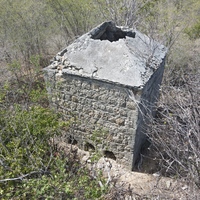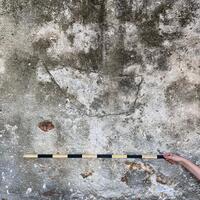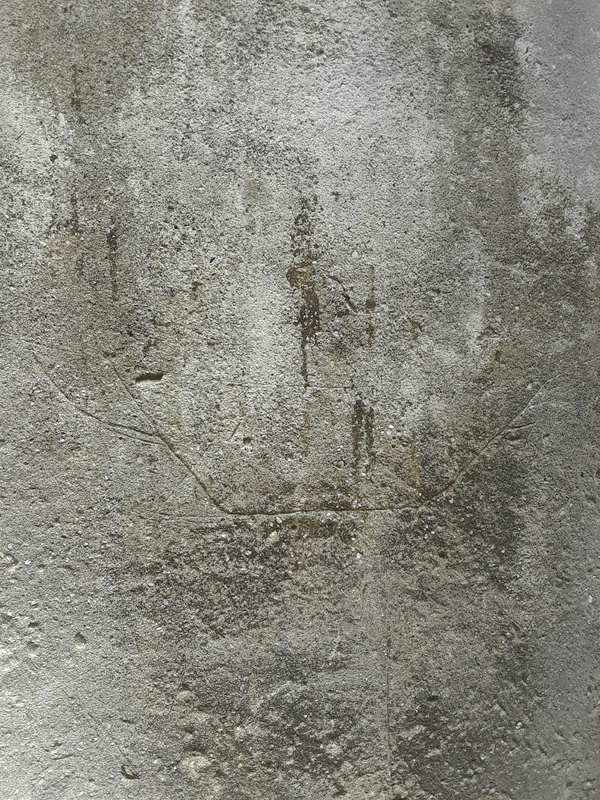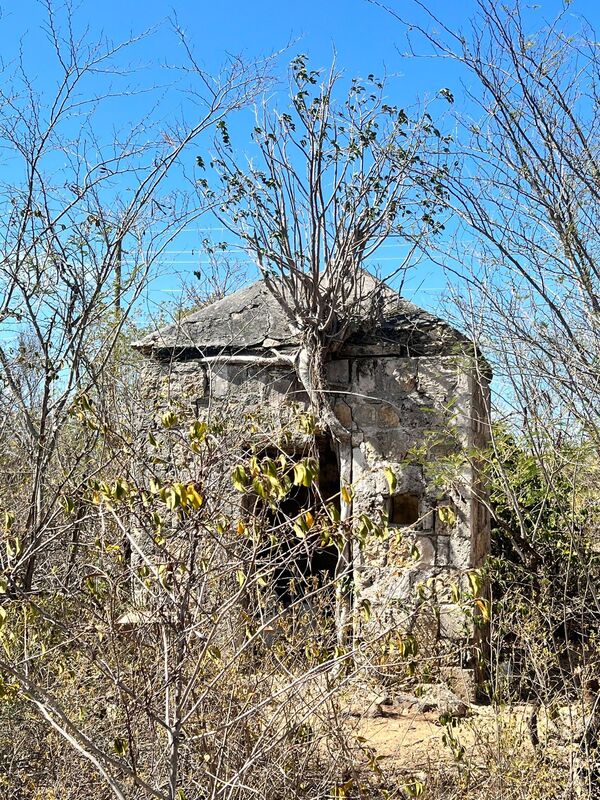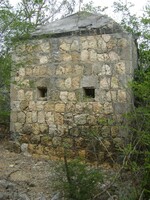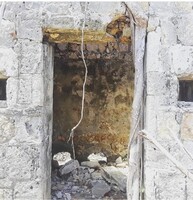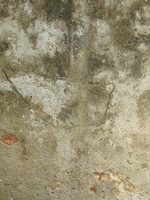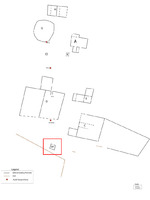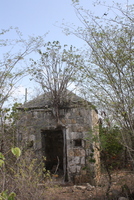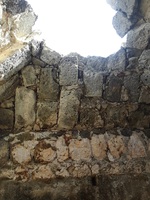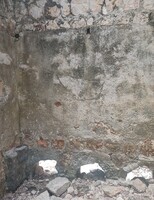Smokehouse Building
This roughly 3 x 3 meter building is the best-preserved structure at Hughes Estate. Three arched vents are located on southern wall of the building, and the remnants of a stone slab are located above the vents in the interior of the building. Six square post holes where the wall meets the roof indicate that at least three wooden beams, likely for hanging meats, ran at ceiling height inside the structure. The building was presumably used for food preparation as evident by the three oven vents. It may have been the plantation smokehouse, which is where meat would have been smoked as a method of food preservation during times before refrigeration. Smoking and salting were the two methods of food preservation during the era the Hughes Estate was in operation. A kitchen has yet to be located on the Hughes Estate site. It is possible that this structure, though small, served as the plantation kitchen. The building is unique as it contains at least eight carvings of ships on the interior walls. We created a 3D model of the structure from photographs taken during the 2021 season.
Ship drawings have been found in enslaved contexts throughout the Americas. Scholars have argued the ship imagery belongs to African diasporic religious symbolism (Lindner 2016), and others as testament to surviving of the middle passage (Singleton and Torres de Souza 2009).The ship etchings described by Lindner were found on a fireplace, also a context that involved smoke.
From archival research we know that in the early 19th century two men enslaved at Hughes Estate in worked in “wharfs or shipping”. The etchings might reference the importance of the skills, knowledge and experience of these men to their community.
Ship Drawings at Hughes Estate and Self-liberation
19th century documents also reveal that slaveholders from the Road Division, the division in which Hughes Estate is located, were concerned with "the frequent immigrations of slaves from this island to the island of Saint Martin” and called for inspections of foreign boats, as well as established licenses which could only be granted to boats “navigated with one white man at least” (Anguilla Council 1828:119). When read against the grain, we can see that Black sailors played a crucial role in resistance against slavery. The ships carved into the smokehouse walls by enslaved people of African descent at Hughes Estate might communicate and commemorate the self-liberation of family, friends, community members via maritime routes to nearby islands outside of British control. Boat imagery might have represented connections to a larger world and the possibilities therein.
Anguilla Council Minutes 1819 – 1841. Transcribed in 2006 by M. Burrow and H. Nielsen. St. Kitts Archives, Basseterre, St. Kitts.
Anguilla Records of Slave Compensation Claims 1834-1835. Transcribed in 2005 by M. Burrow and H. Nielsen. St. Kitts Archives, Basseterre, St. Kitts.
Lindner, Christopher.
2016 “West African Cosmogram Recognized adjacent to Probable Hearth Concealment at 19th-Century Slave Quarter in mid-Hudson Valley Settlement of Early German Americans”. The SHA Newsletter. 49(1):28-29.
Singleton, Theresa and de Souza, M.A.T.
2009 “Archaeologies of the African Diaspora: Brazil, Cuba, and the United States”. In International Handbook of Historical Archaeology, edited by Gaimster D., Majewski T., Springer, New York, NY. pp. 449-469
